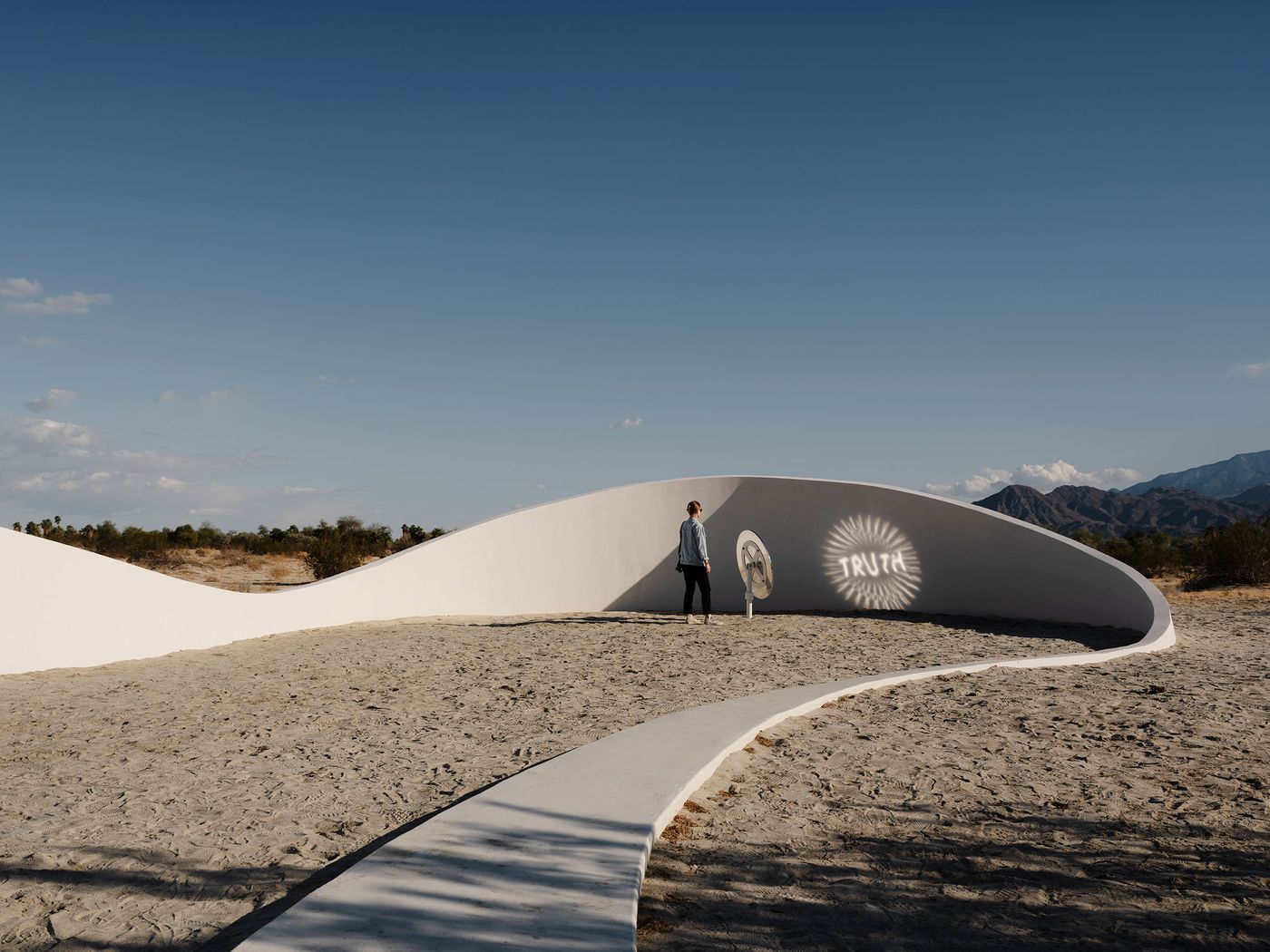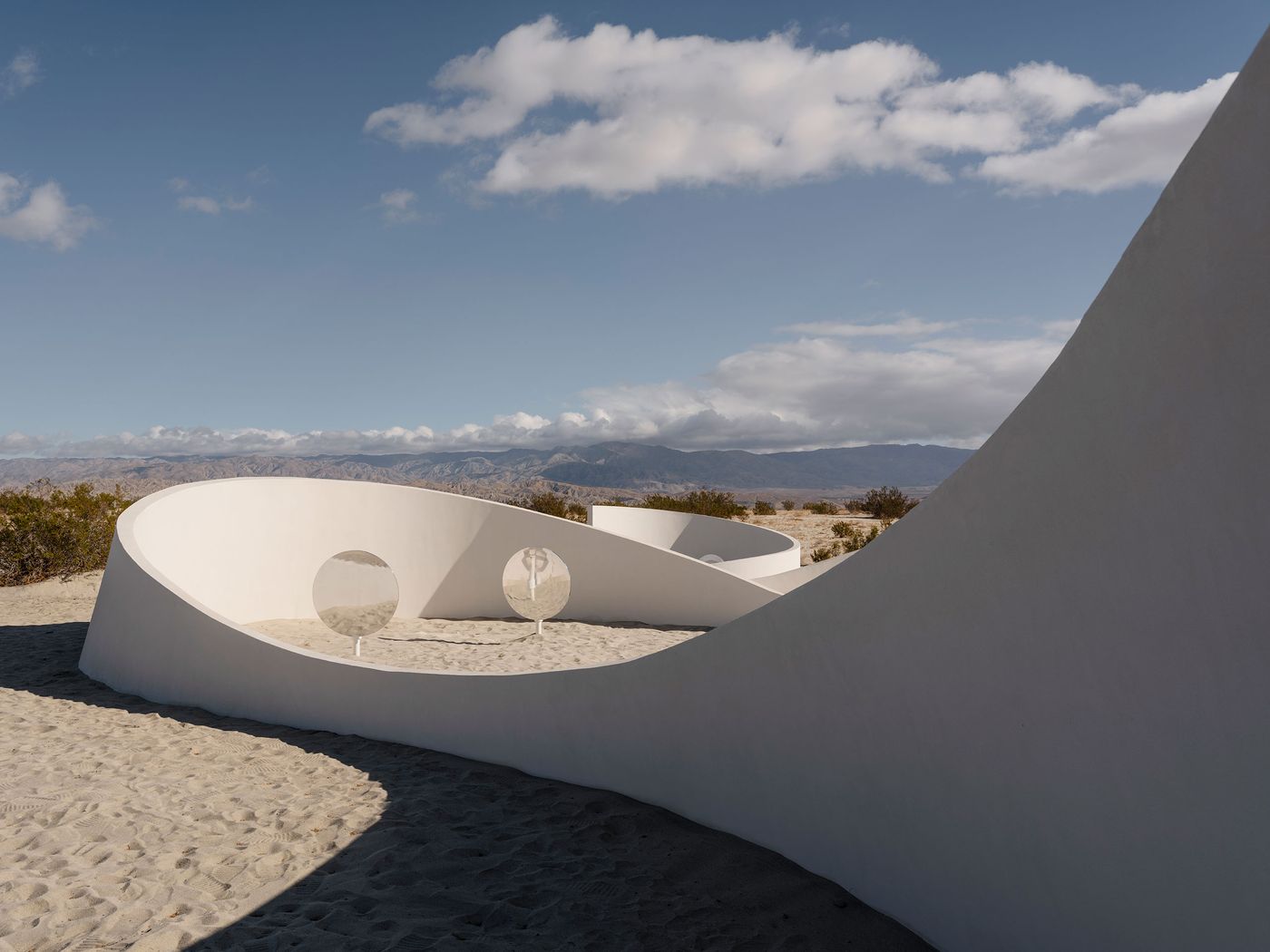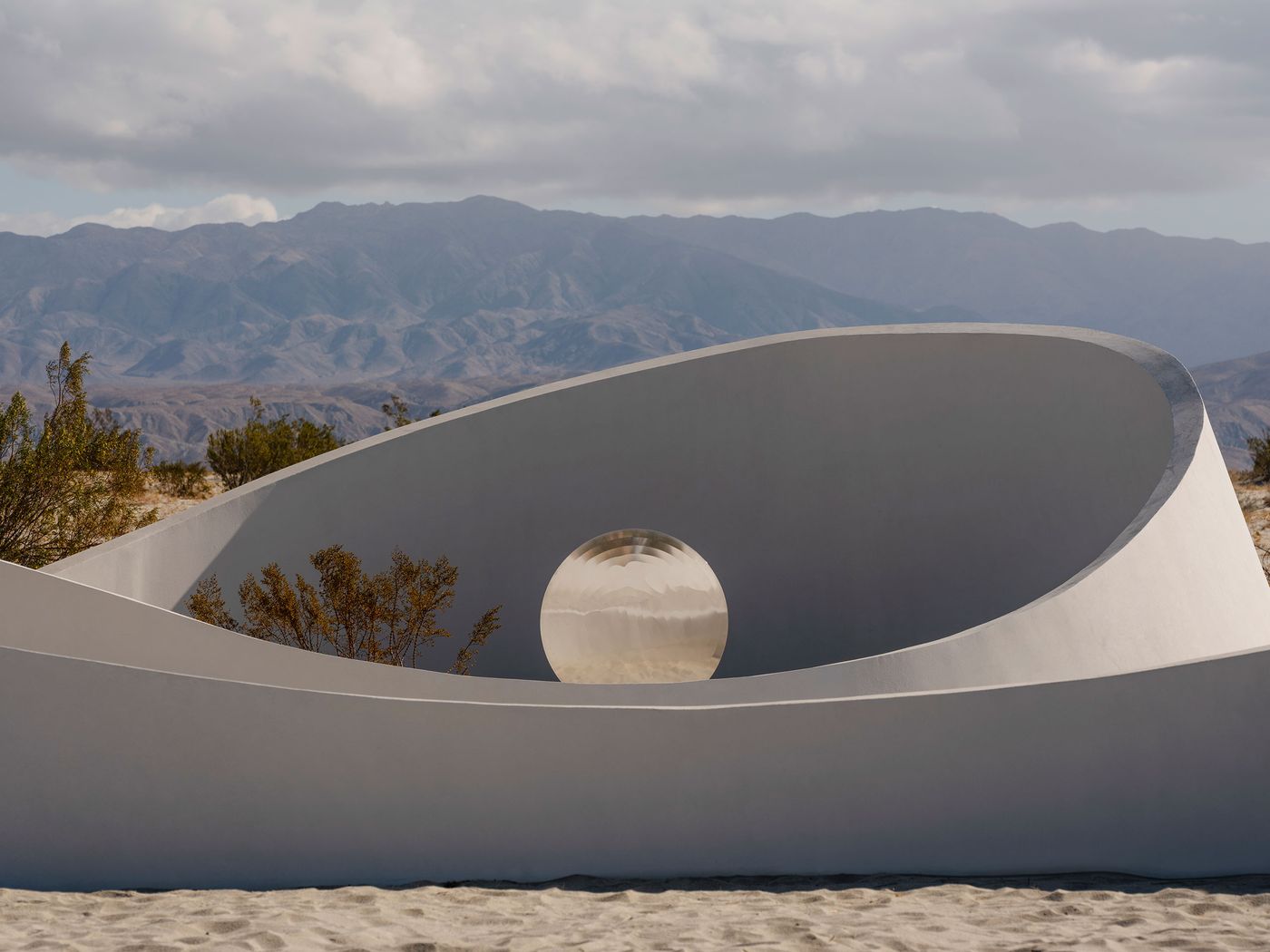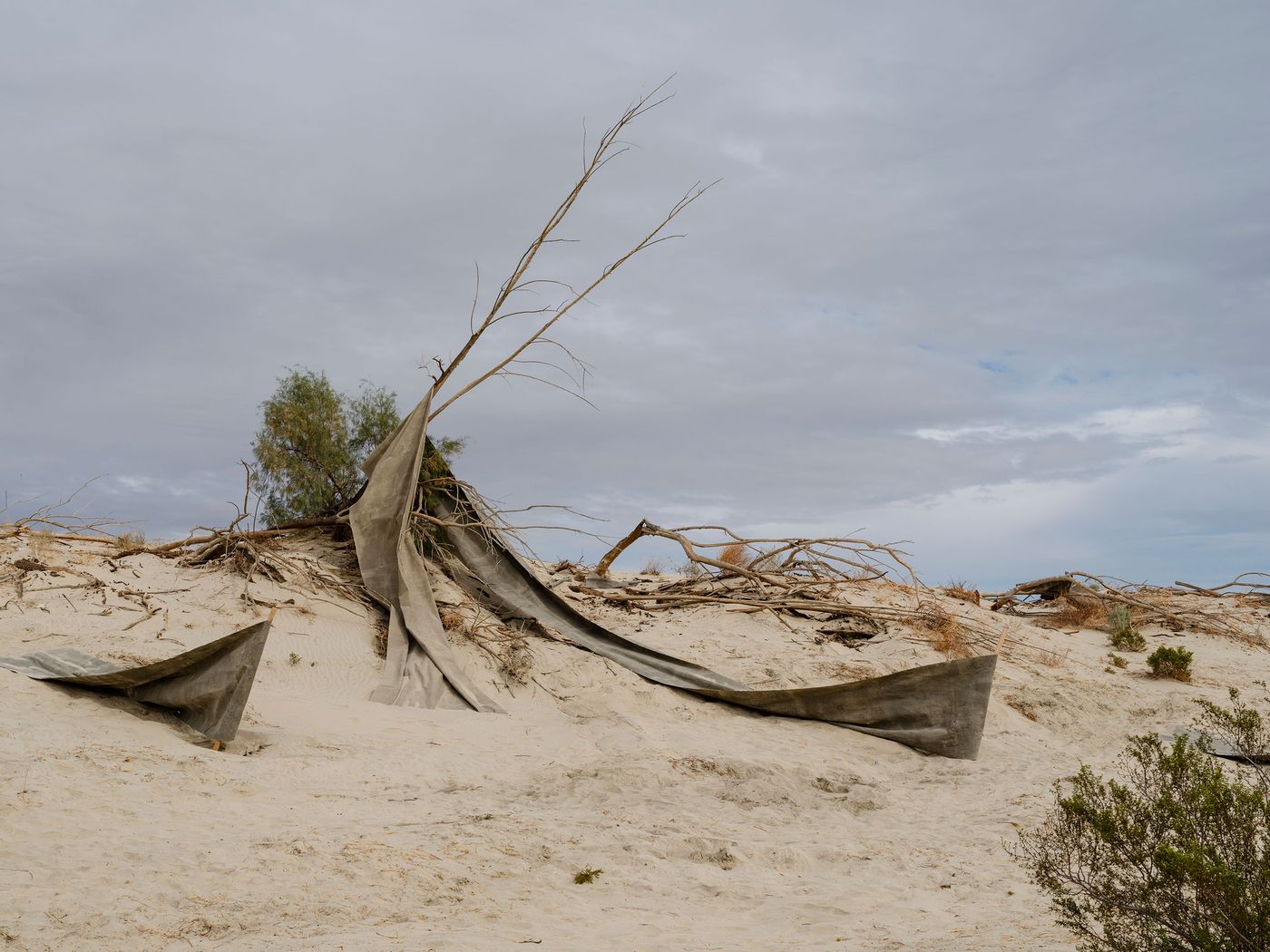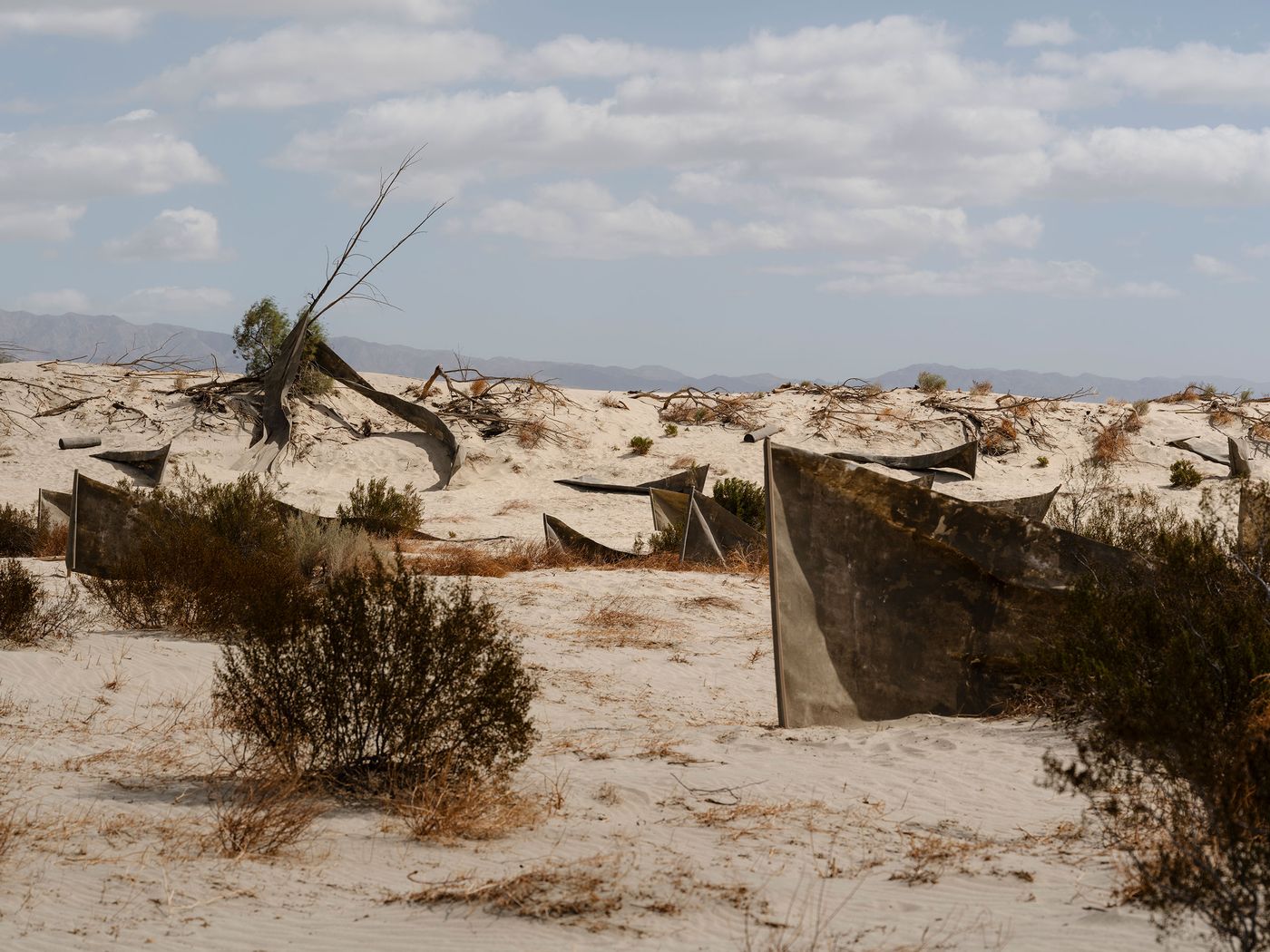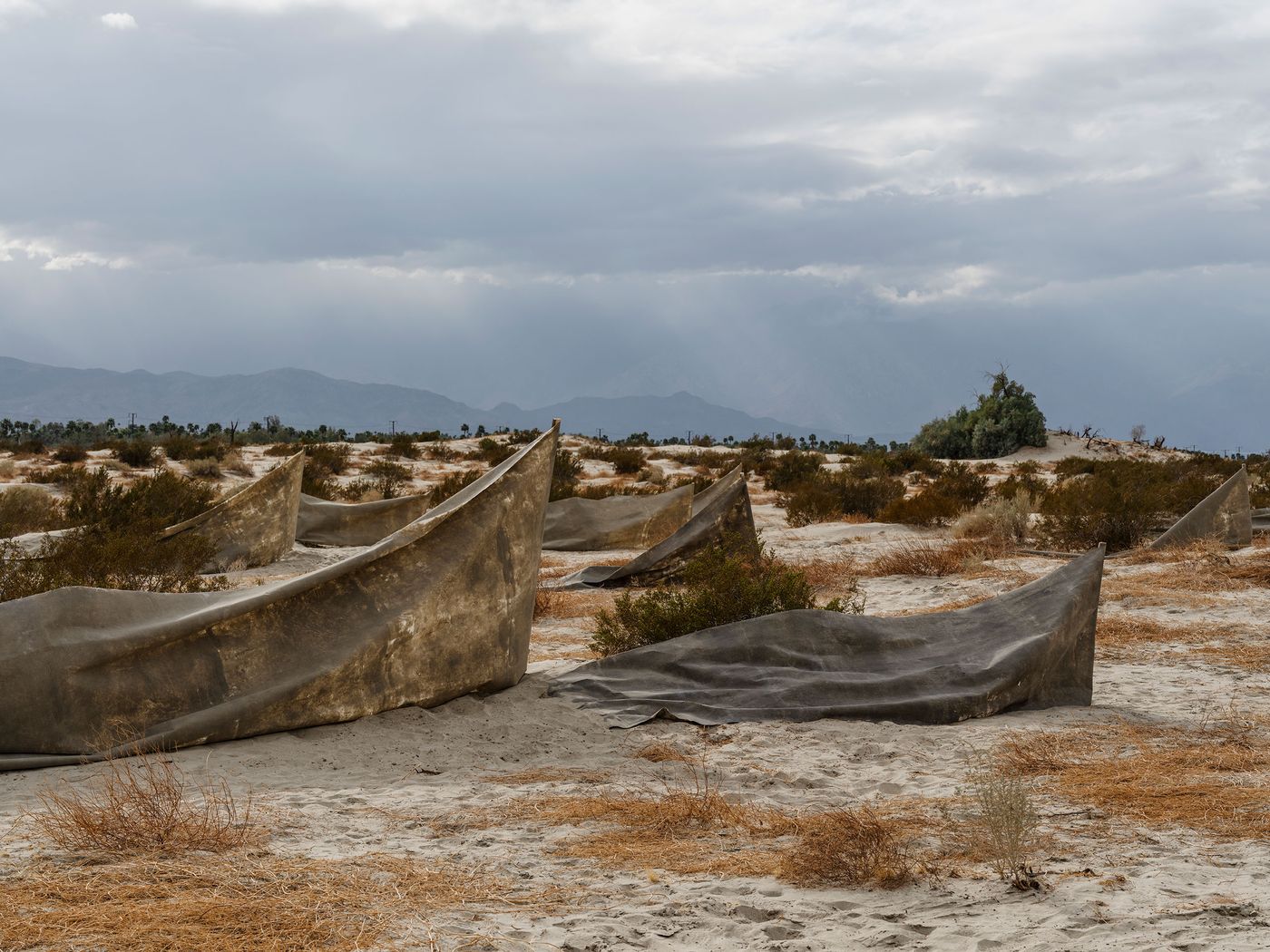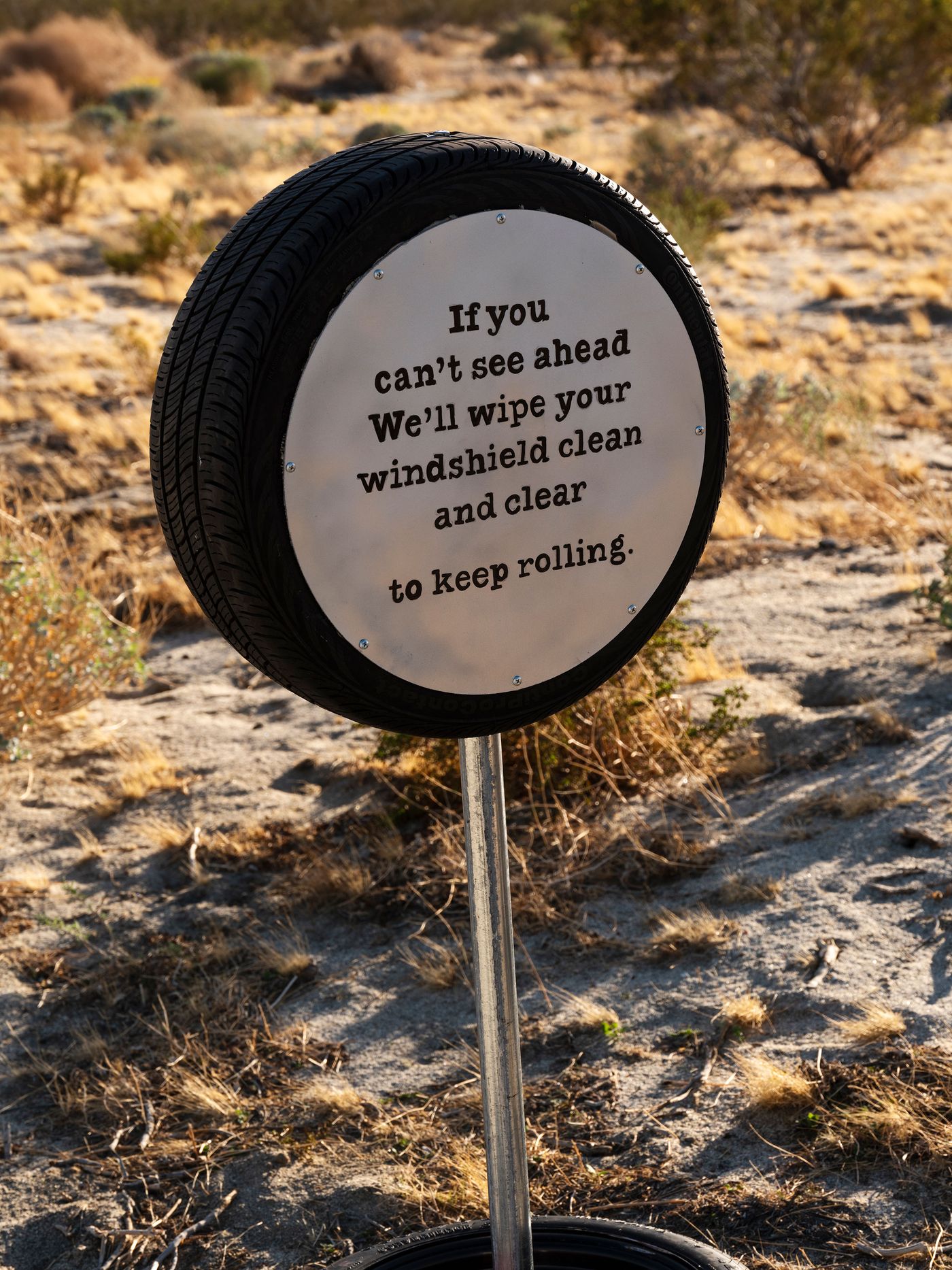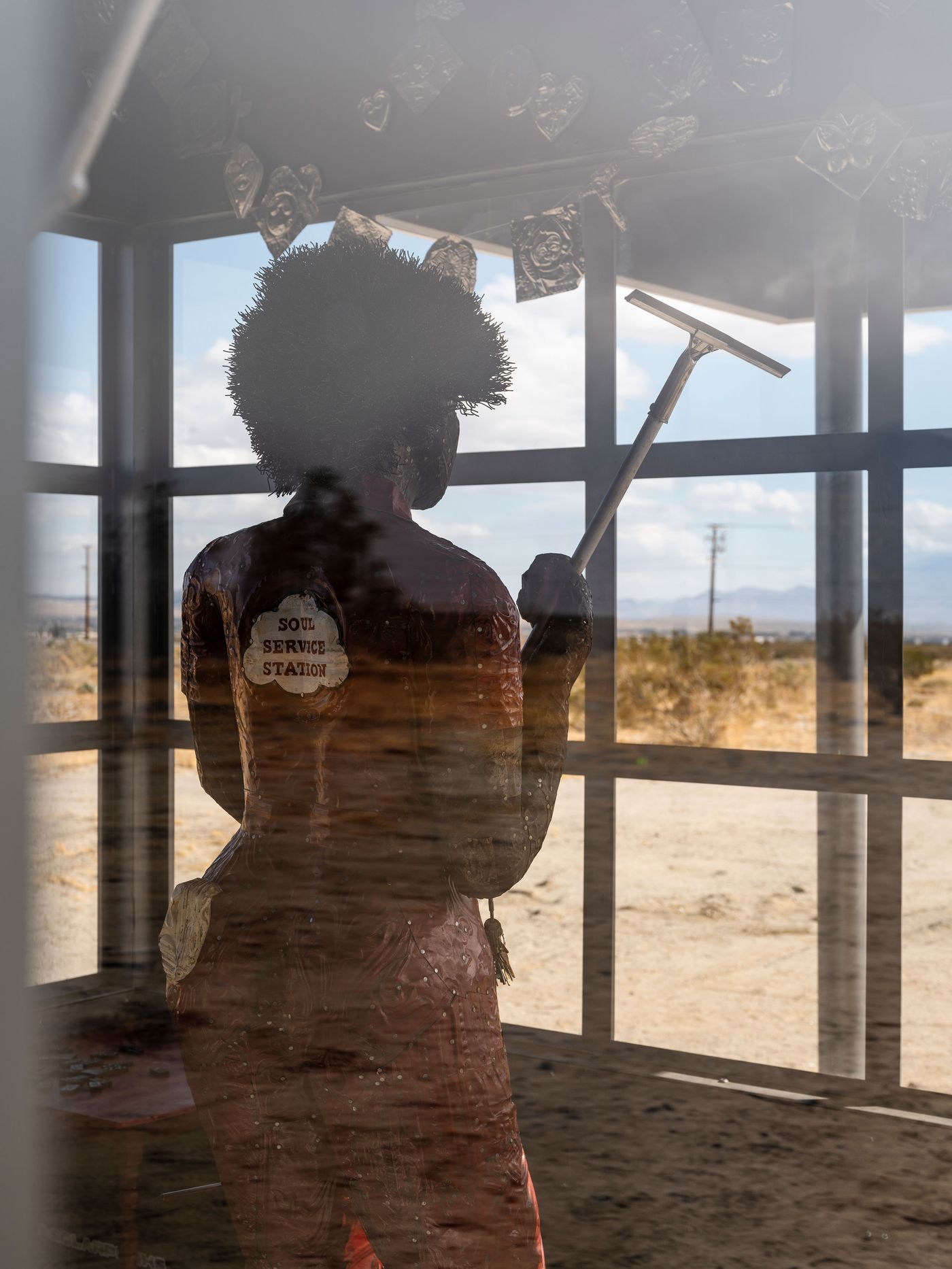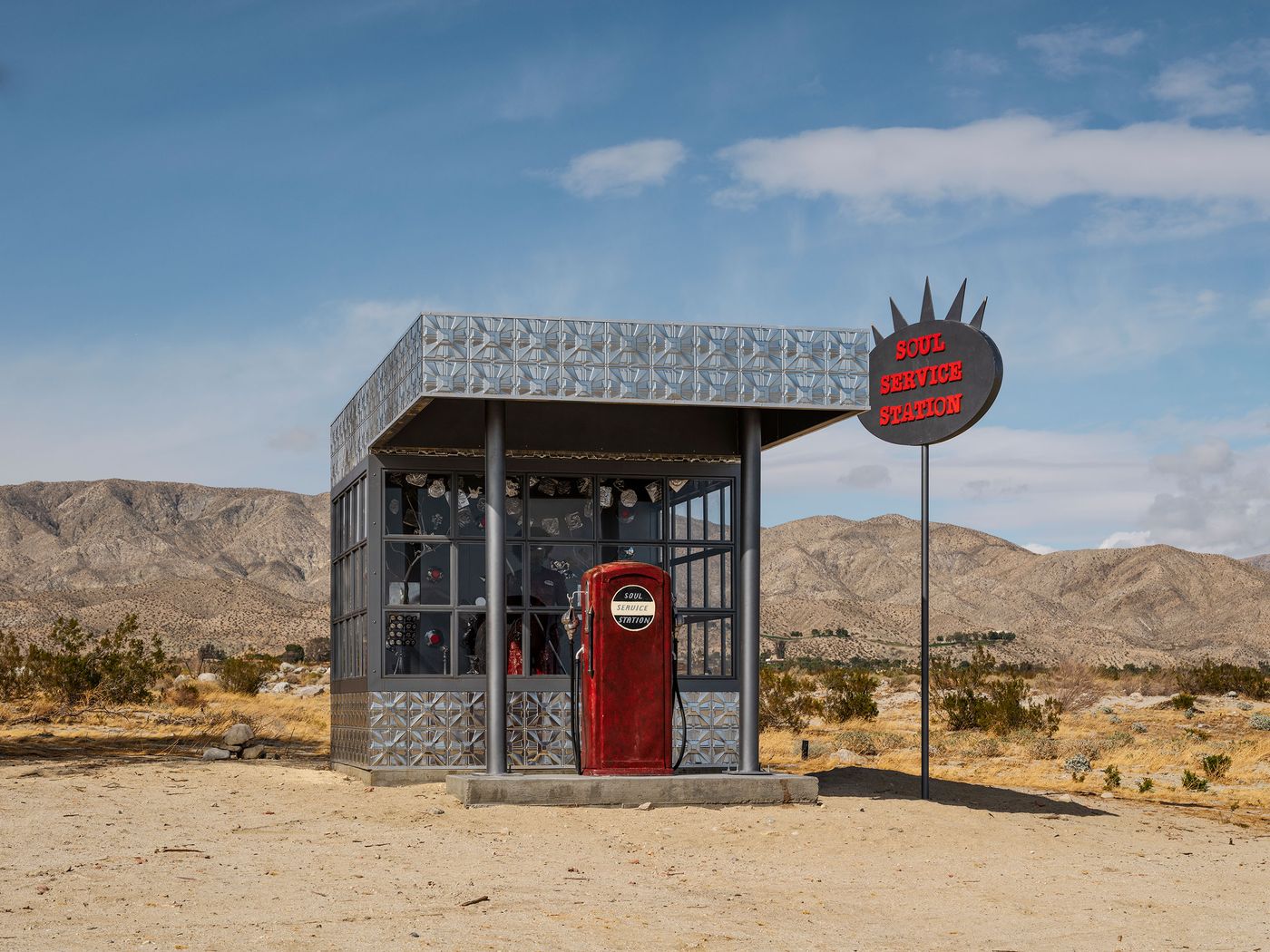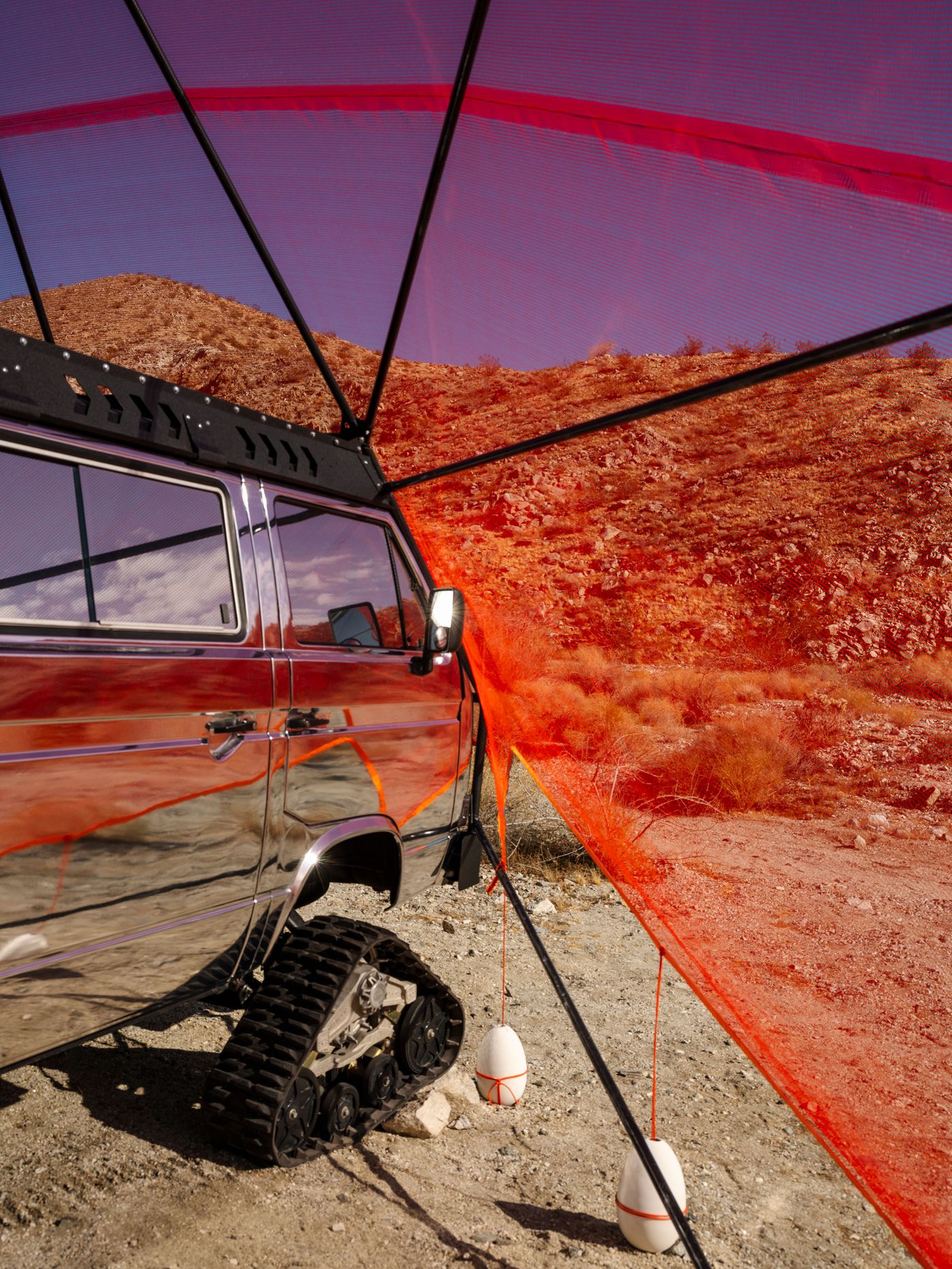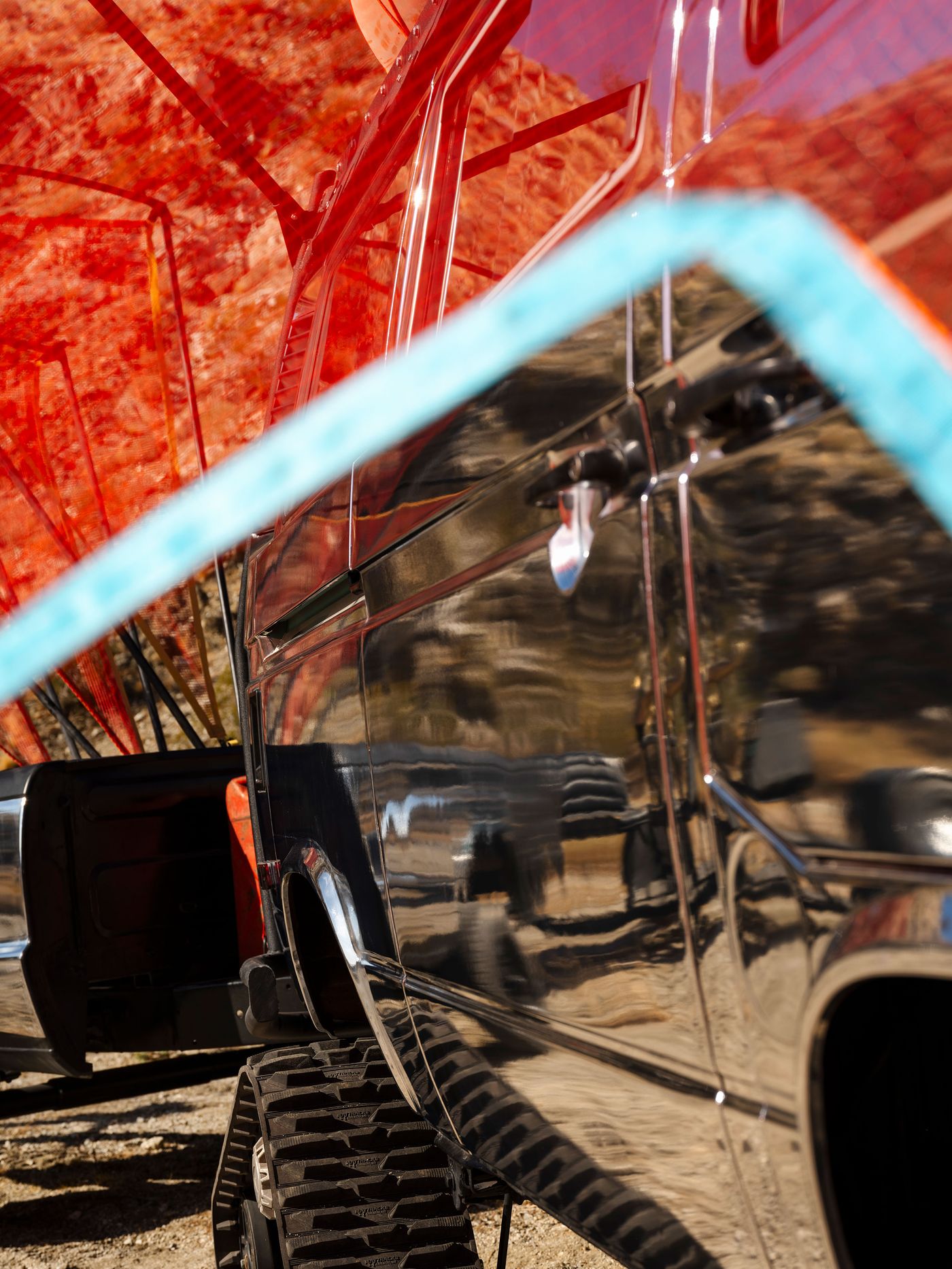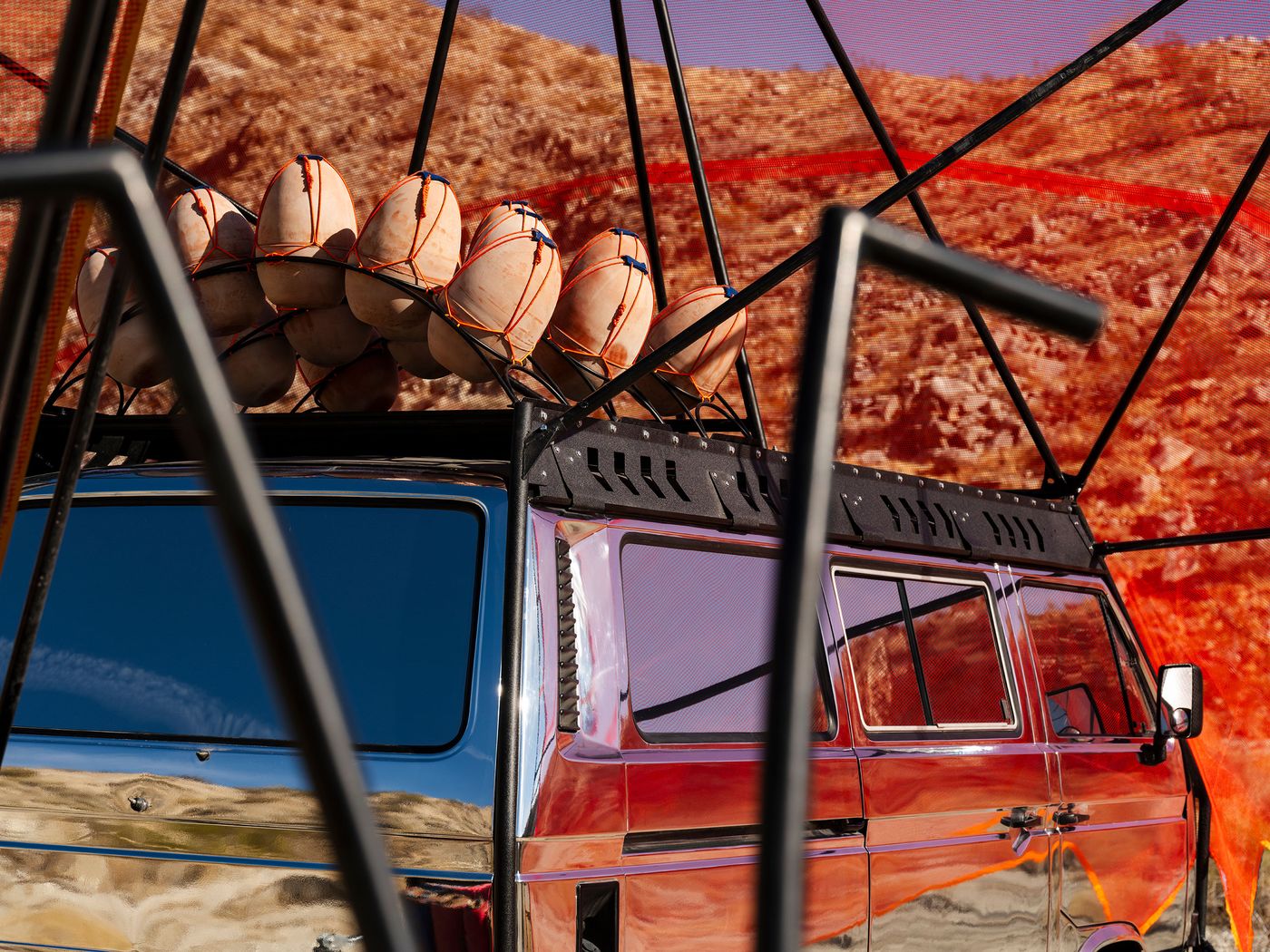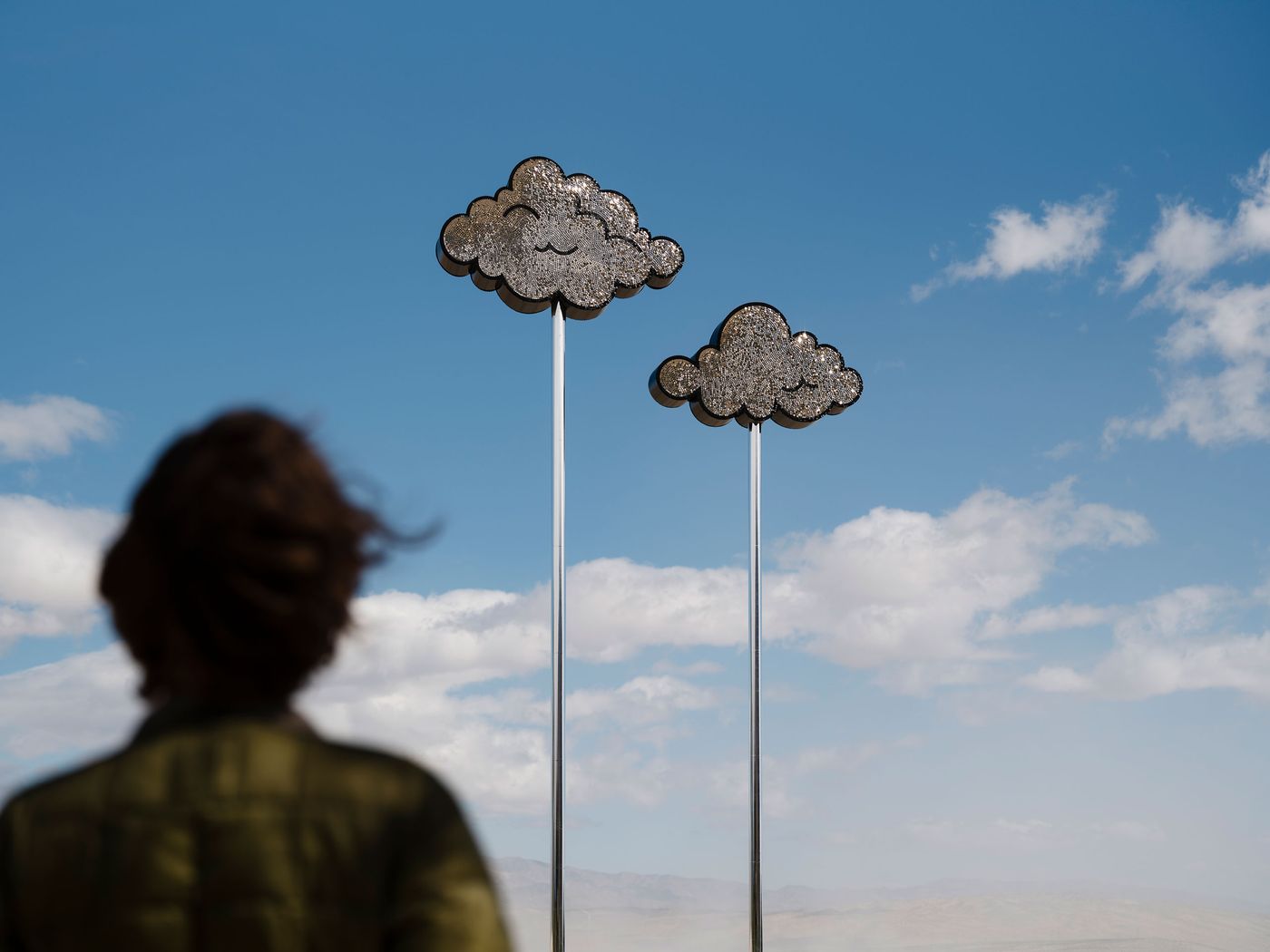
Desert X 2025: Eleven Artists Conjure Contested Narratives and Possible Futures
Words by Eric David
Location
Coachella Valley, USA
Desert X 2025: Eleven Artists Conjure Contested Narratives and Possible Futures
Words by Eric David
Coachella Valley, USA
Coachella Valley, USA
Location
Every two years, the arid expanse of California’s Coachella Valley becomes the canvas for Desert X—an exhibition that rewrites the script of land art with a distinctly 21st-century pen. For its 2025 edition (running until May 11), curated by returning artistic director Neville Wakefield together with Kaitlin Garcia-Maestas, the desert is transformed from a romantic void into a palimpsest of deep time, contested narratives, and possible futures. Eleven artists from across the globe engage with this layered terrain, offering sensorial, architectural, and ephemeral responses to themes ranging from Indigenous futurism and design activism to the role of emerging technologies in contemporary society. Here, temporality is not linear but looping—where ancestral memory converses with speculative design, and wind and light become co-authors of meaning. As the works punctuate the landscape, they prompt reflection on how we occupy our increasingly imperilled world underscoring the urgency of finding sustainable approaches to living.

Desert X 2025 installation view of Jose Dávila, The act of being together, photo by Lance Gerber, courtesy Desert X.
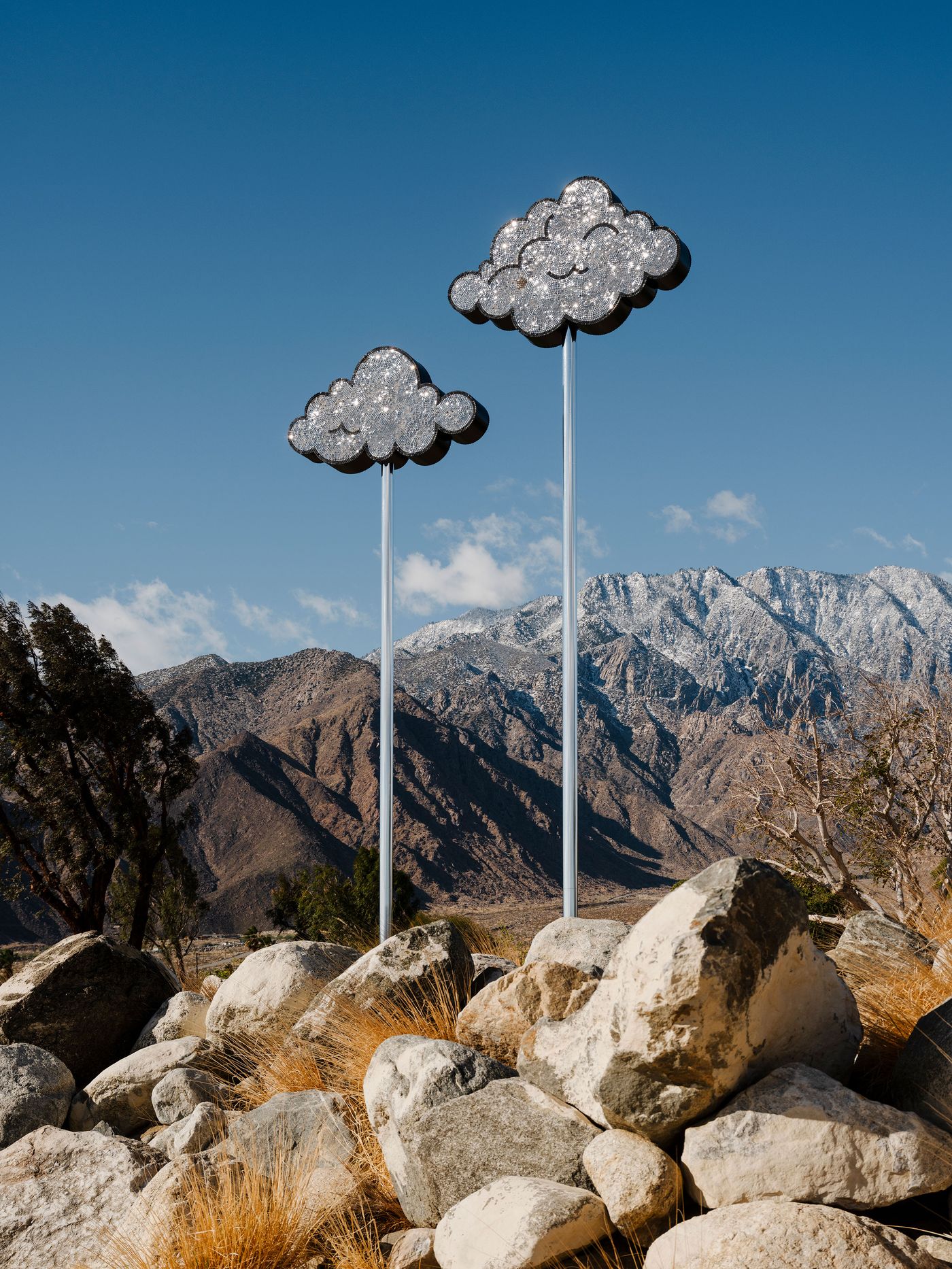
Desert X 2025 installation view of Sanford Biggers, Unsui (Mirror), photo by Lance Gerber, courtesy Desert X.
As always, there’s no shortage of monumental installations. José Dávila’s The Act of Being Together, for example, consists of massive, monolithic marble blocks resembling archaeological relics from a long-lost civilisation. Transported to the Coachella Valley from a quarry several hundred miles across the US–Mexico border, the marble spans both space and time. The daunting task of moving the blocks across that boundary alludes, of course, to the physical and psychological toll migrants endure in search of a brighter future. With that being said, his work is no scathing political reproach; on the contrary, it’s about finding hope amid hardship. Monumentally stacked in evocatively balanced formations, the blocks speak of strength, resilience, and communities coming together. Experienced amid the desert’s almost empty, vast landscape, their timeless sensibility also echoes our transient position within an infinite expanse.

Desert X 2025 installation view of Jose Dávila, The act of being together, photo by Lance Gerber, courtesy Desert X.
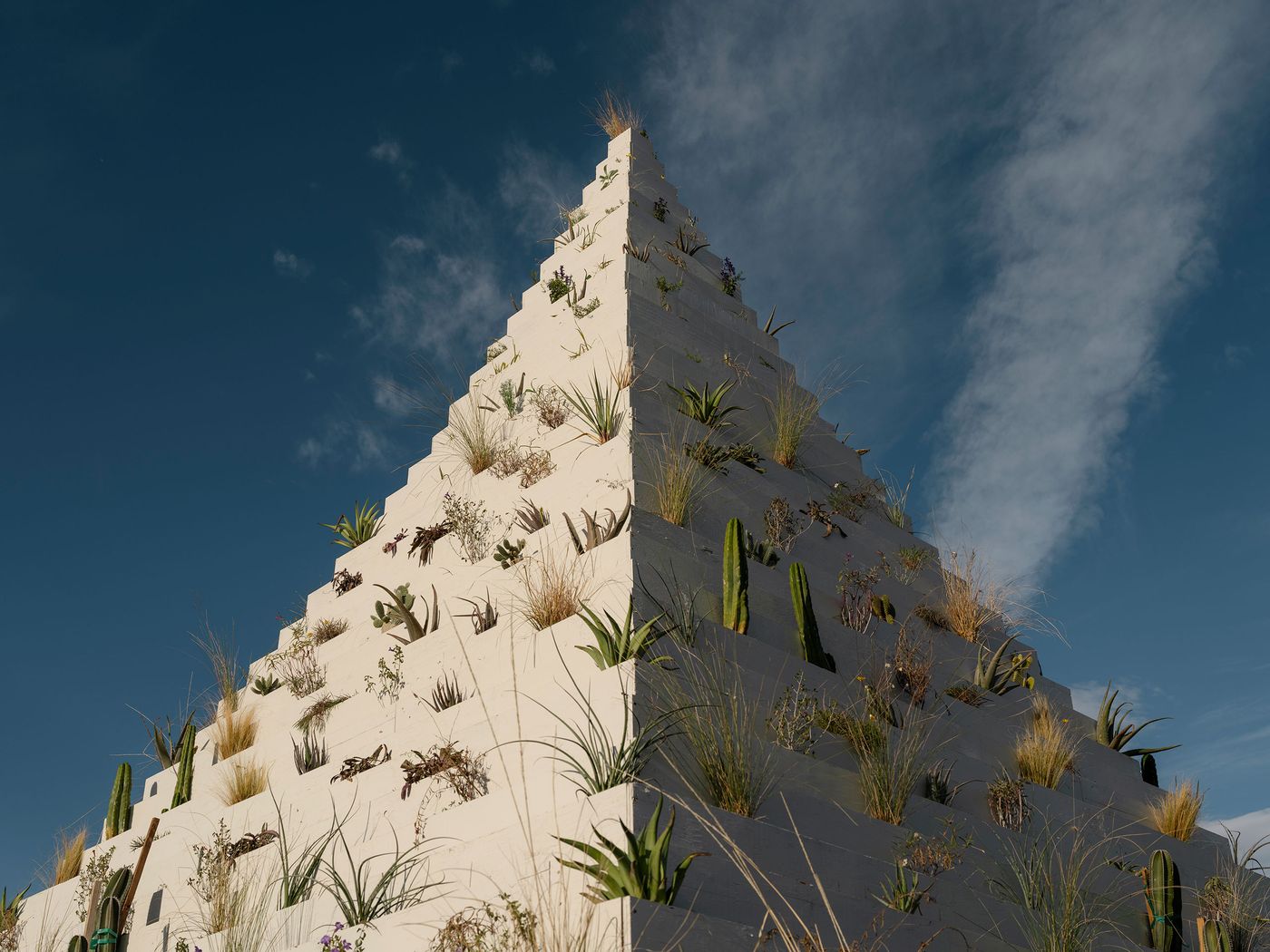
Desert X 2025 installation view of Agnes Denes The Living Pyramid at SunnylandsCenter & Gardens, photo by Lance Gerber, courtesy Desert X.
The Living Pyramid by pioneering artist Agnes Denes is another monumental piece that conjures echoes of ancient civilisations. On view at Sunnylands Center & Gardens, the pyramid-shaped structure was planted in November with native vegetation. Ever since, its form has gradually transformed as the plants sprout and bloom in sync with the desert’s slow-growing rhythms. Part sculpture, part environmental intervention, it unites Denes’ powerful public landworks with her ongoing exploration of the pyramid—one of humanity’s most iconic forms—reminding us that through care and nurture, the spirit of endurance is allowed to endure.
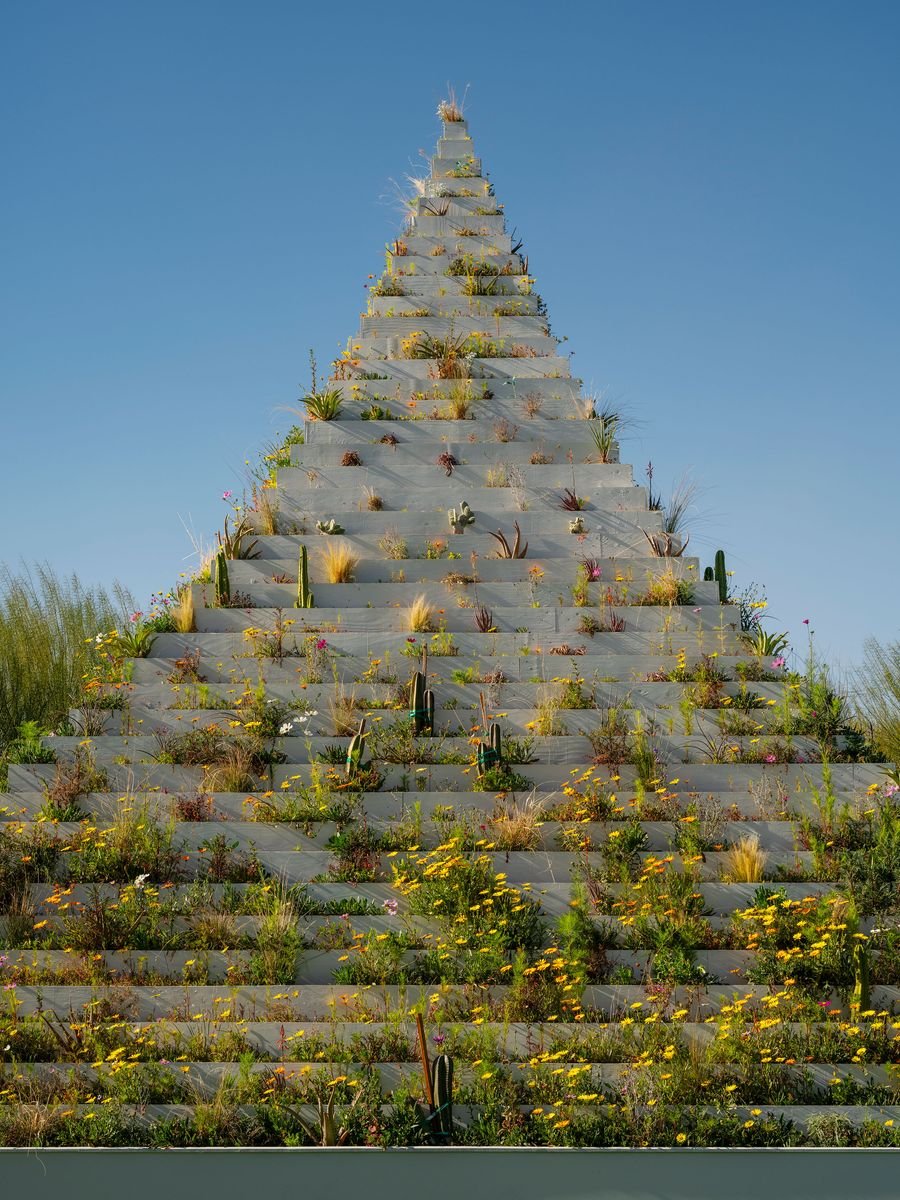
Desert X 2025 installation view of Agnes Denes The Living Pyramid at SunnylandsCenter & Gardens, photo by Lance Gerber, courtesy Desert X.

Desert X 2025 installation view of Agnes Denes The Living Pyramid at SunnylandsCenter & Gardens, photo by Lance Gerber, courtesy Desert X.

Desert X 2025 installation view of Kimsooja, To Breathe – Coachella Valley, photo by Lance Gerber, courtesy Desert X.

Desert X 2025 installation view of Kimsooja, To Breathe – Coachella Valley, photo by Lance Gerber, courtesy Desert X.
Far more futuristic in form yet equally timeless in concept is South Korean artist Kimsooja’s To Breathe – Coachella Valley, a spiral glass structure that visitors can walk through. Inspired by the traditional Korean fabric bundle known as bottari, a signature motif in the artist’s practice, the work is wrapped in an optical film that produces a dazzling spectrum of light and colour thanks to thousands of vertical and horizontal grooves that act as prisms. The installation itself serves to draw a line between different cultures and belief systems with the colour spectrum alluding to symbolic meanings in Taoism, Confucianism and Buddhism whilst solemnly nodding to the historical roots of the Light and Space movement which fittingly originated on the US West Coast.
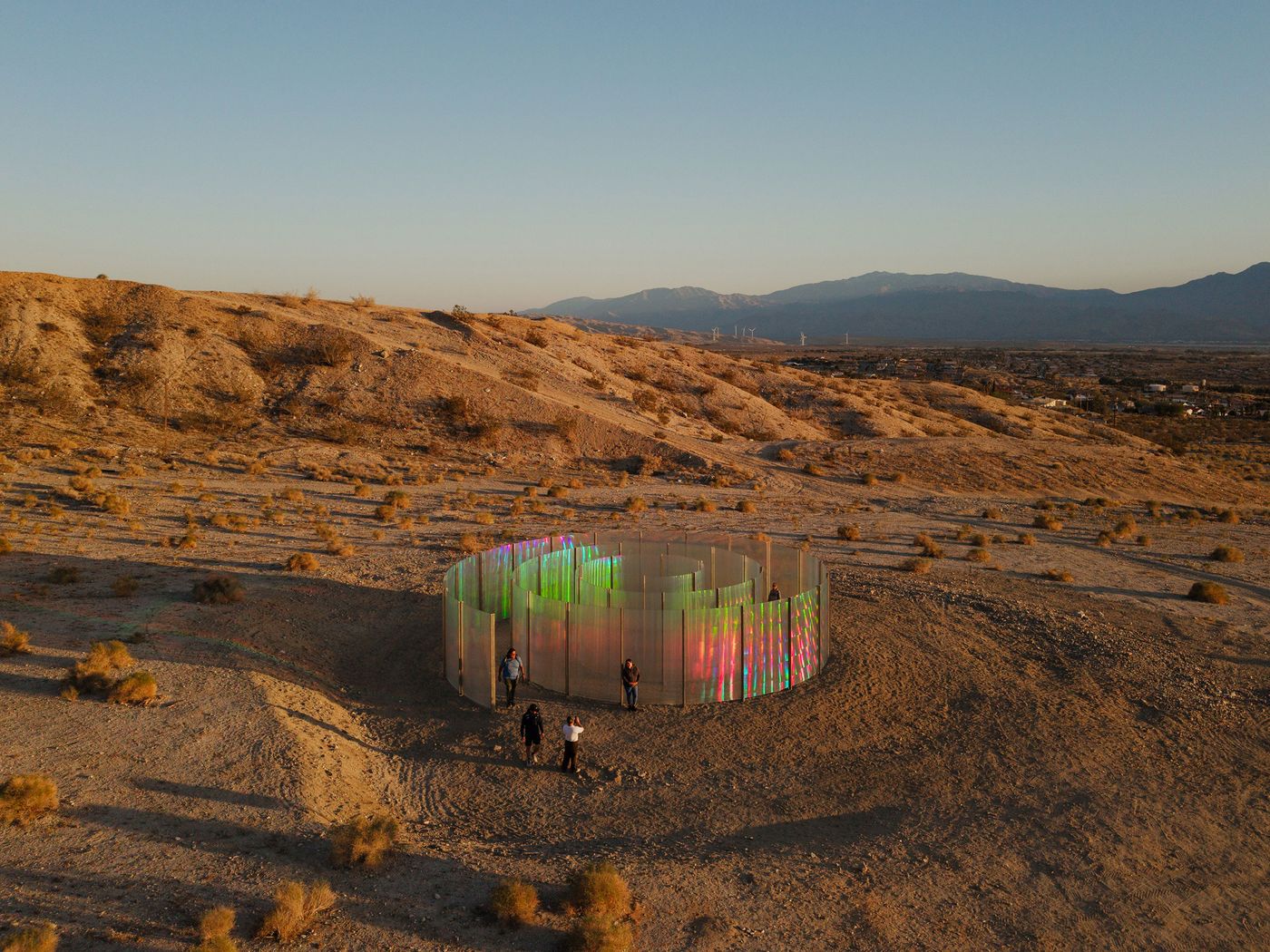
Desert X 2025 installation view of Kimsooja, To Breathe – Coachella Valley, photo by Lance Gerber, courtesy Desert X.

Desert X 2025 installation view of Sarah Meyohas, Truth Arrives in Slanted Beams, photo by Lance Gerber, courtesy Desert X.

Desert X 2025 installation view of Sarah Meyohas, Truth Arrives in Slanted Beams, photo by Lance Gerber, courtesy Desert X.

Desert X 2025 installation view of Sarah Meyohas, Truth Arrives in Slanted Beams, photo by Lance Gerber, courtesy Desert X.
Reflection and refraction also underpin Sarah Meyohas’ immersive installation Truth Arrives in Slanted Beams. Paying homage to 20th-century land art, her sinuous, ribbon-like structure makes an impression even before visitors activate it by projecting sunlight onto its surface via a series of reflective discs that are meant to recall ancient sundials. Once they do, the piece comes alive with wave-like light patterns—akin to the caustics seen at the bottom of a swimming pool—inducing a longing for the desert’s ever-receding water.

Desert X 2025 installation view of Sarah Meyohas, Truth Arrives in Slanted Beams, photo by Lance Gerber, courtesy Desert X.

Desert X 2025 installation view of Raphael Hefti, Five things you can’t wear on TV, photo by Lance Gerber, courtesy Desert X.

Desert X 2025 installation view of Raphael Hefti, Five things you can’t wear on TV, photo by Lance Gerber, courtesy Desert X.
Swiss artist Raphael Hefti takes a more understated approach to light. His piece, Five Things You Can’t Wear on TV, features a long, suspended ribbon of black woven polymer fibre—originally designed for lightweight fire hoses—stretched between two distant anchor points. One side of the ribbon is coated with a reflective finish, and as it flutters in the wind, light flickers along its surface, subtly destabilising visitors’ perception of space, scale and distance.
Wind also plays a central role in What Remains, a poetic installation by Saudi artist Muhannad Shono. Here, long strips of fabric are interwoven with desert shrubs, loosely anchored in the sand allowing them to billow and become tangled as a result of the ever-changing breeze. The resulting chaos speaks to the fluidity of identity and land, evoking how the landscape itself is in constant flux.

Desert X 2025 installation view of Muhannad Shono, What Remains, photo by Lance Gerber, courtesy Desert X.
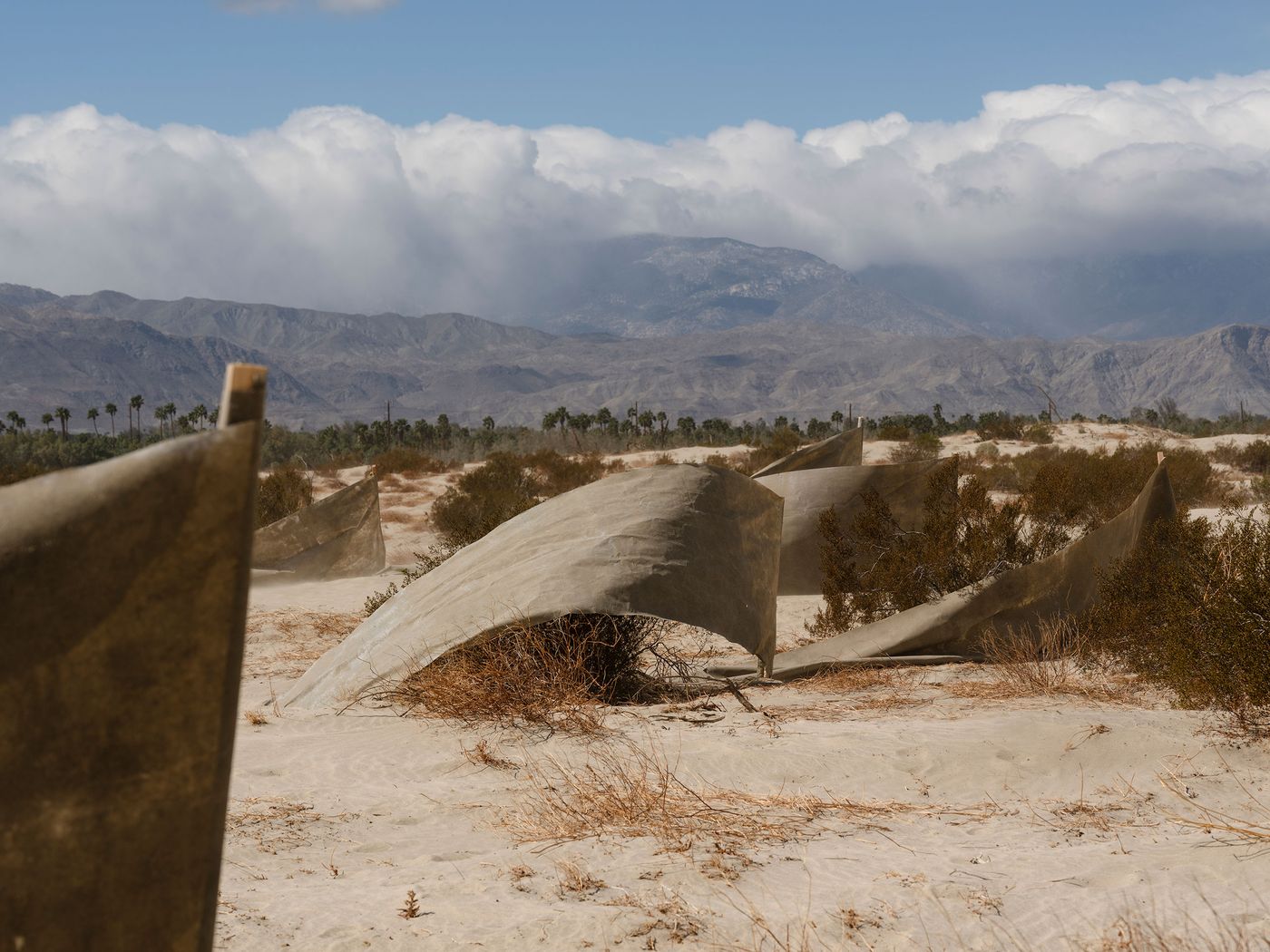
Desert X 2025 installation view of Muhannad Shono, What Remains, photo by Lance Gerber, courtesy Desert X.
This interplay between material and meaning is key to both Shono and American architect-artist Ronald Rael, even though their approaches differ. While Shono conjures form through conceptual ingenuity, Rael on the other hand, harnesses cutting-edge technology to revive ancient crafts. Case in point, Adobe Oasis, an earthen structure built through robotic 3D printing. Inspired by the legacy of Coachella Valley’s palm oases, the structure’s corrugated texture mimics palm bark, while the maze-like layout frames views of the land and sky in an attempt to cultivate solitude and reflection.
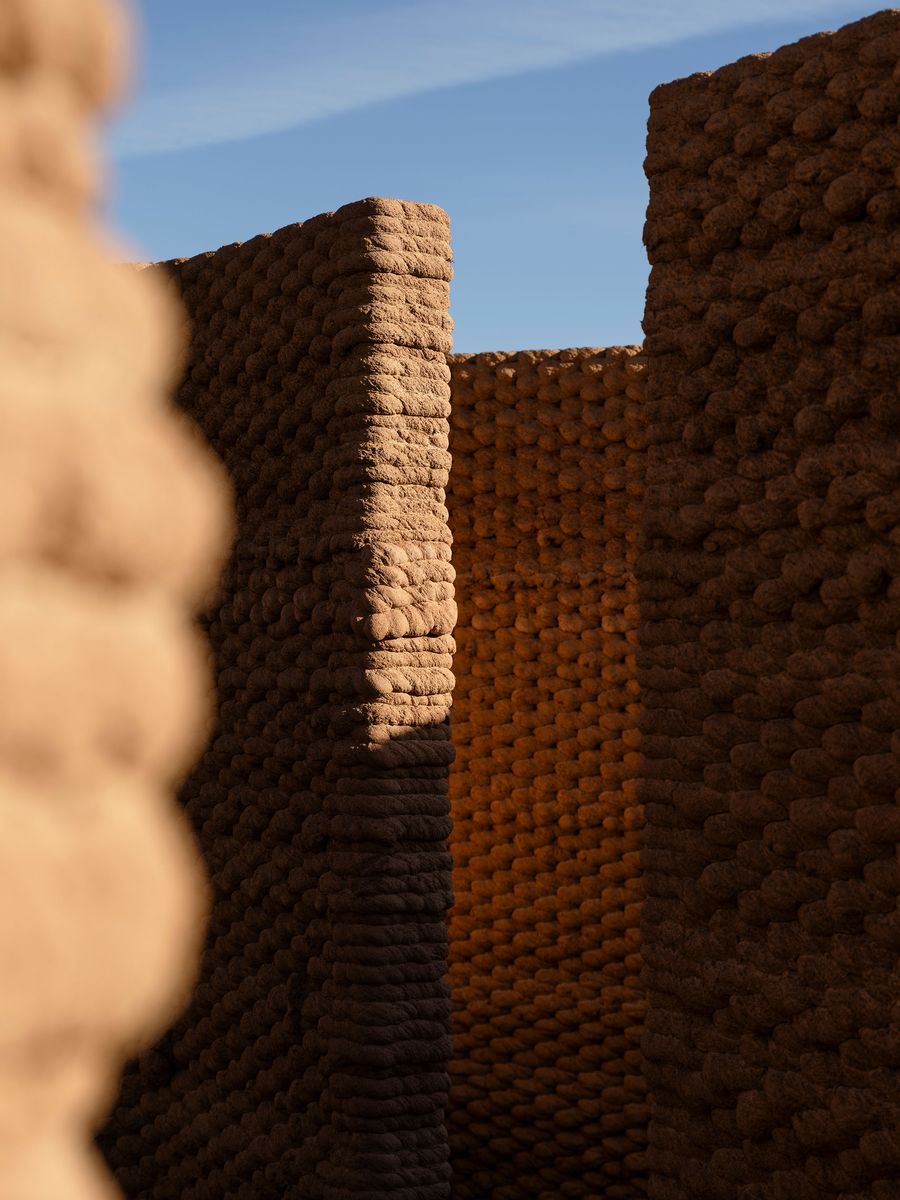
Desert X 2025 installation view of Ronald Rael, Adobe Oasis, photo by Lance Gerber, courtesy Desert X.
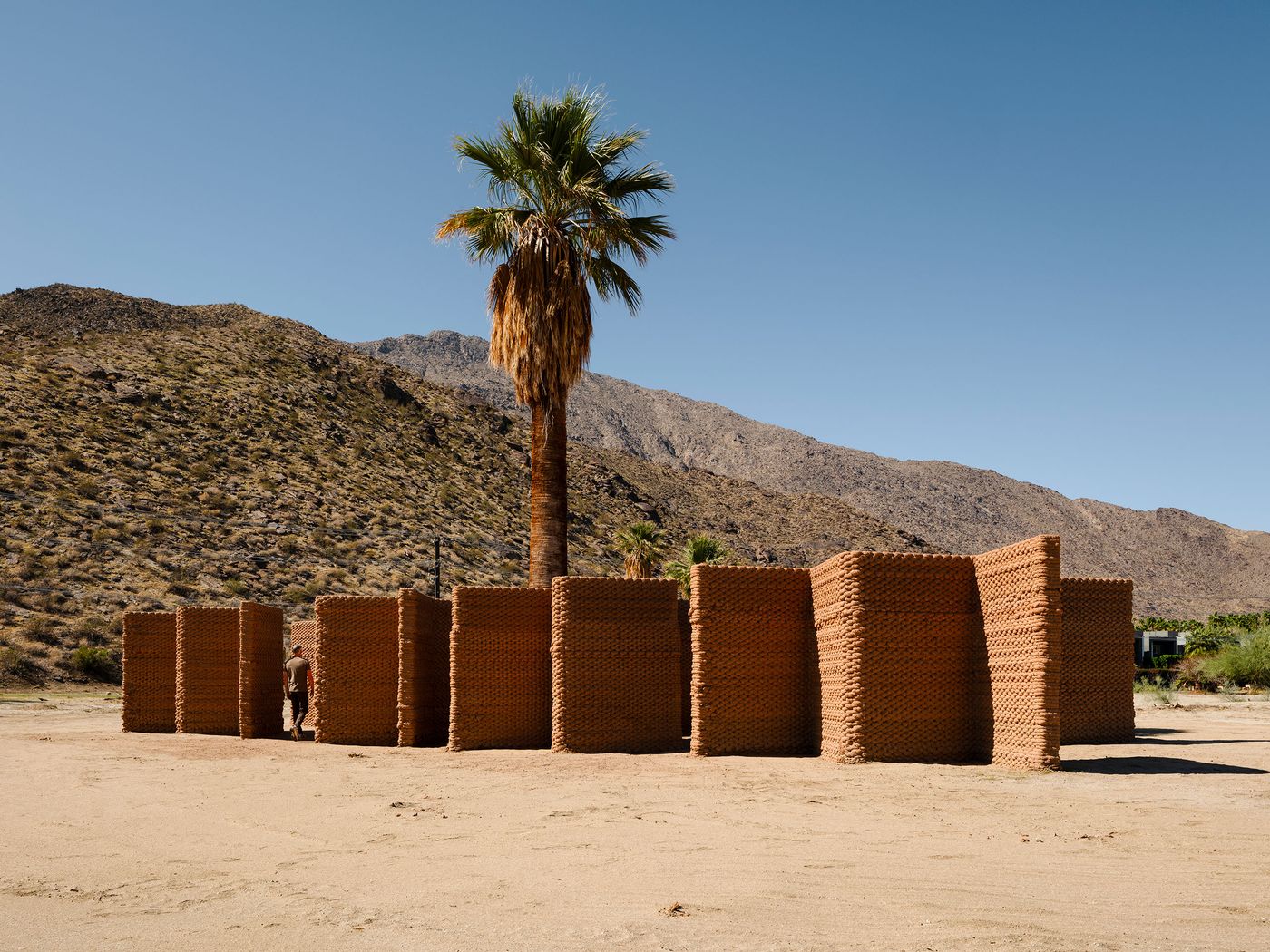
Desert X 2025 installation view of Ronald Rael, Adobe Oasis, photo by Lance Gerber, courtesy Desert X.
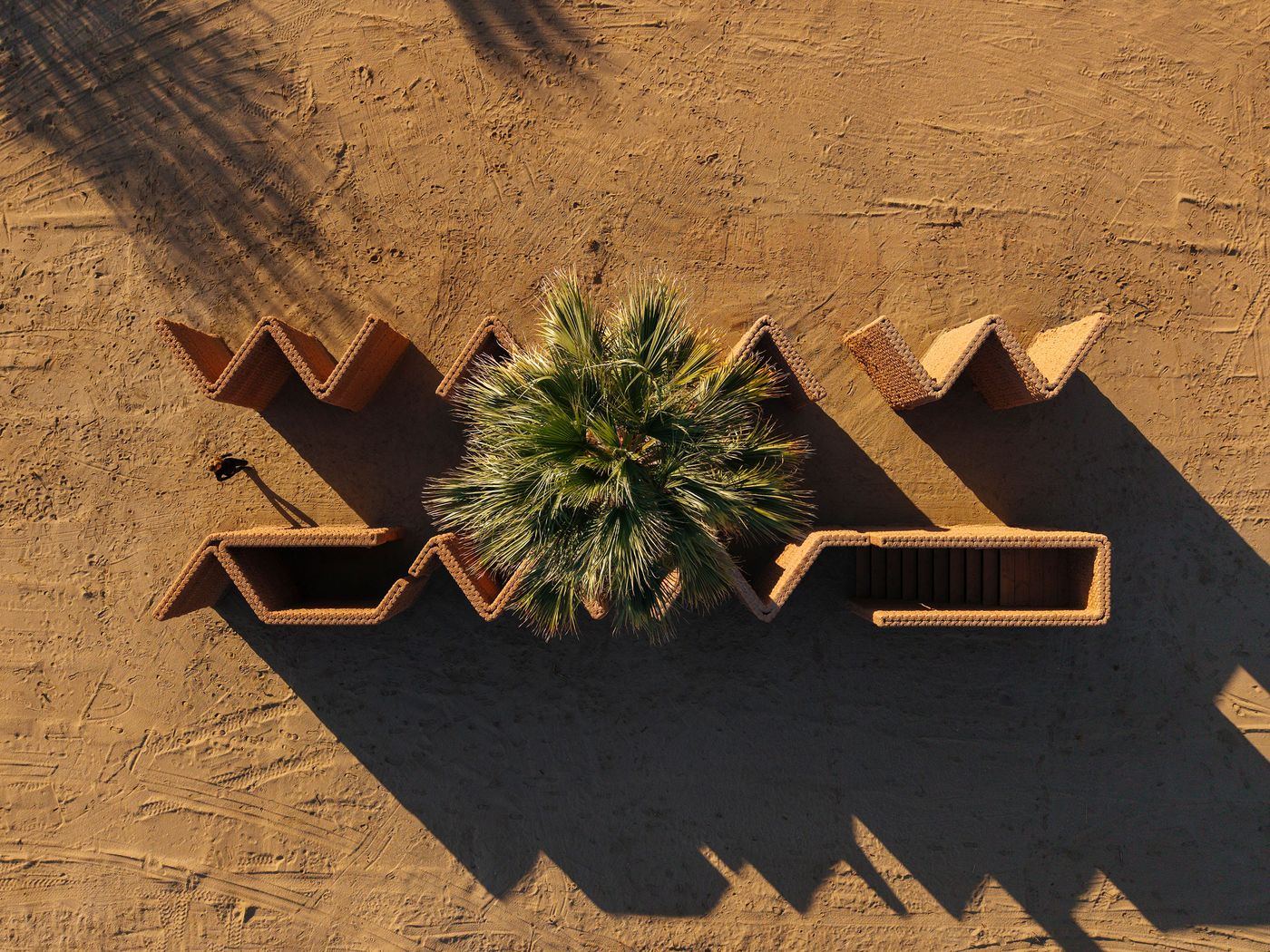
Desert X 2025 installation view of Ronald Rael, Adobe Oasis, photo by Lance Gerber, courtesy Desert X.
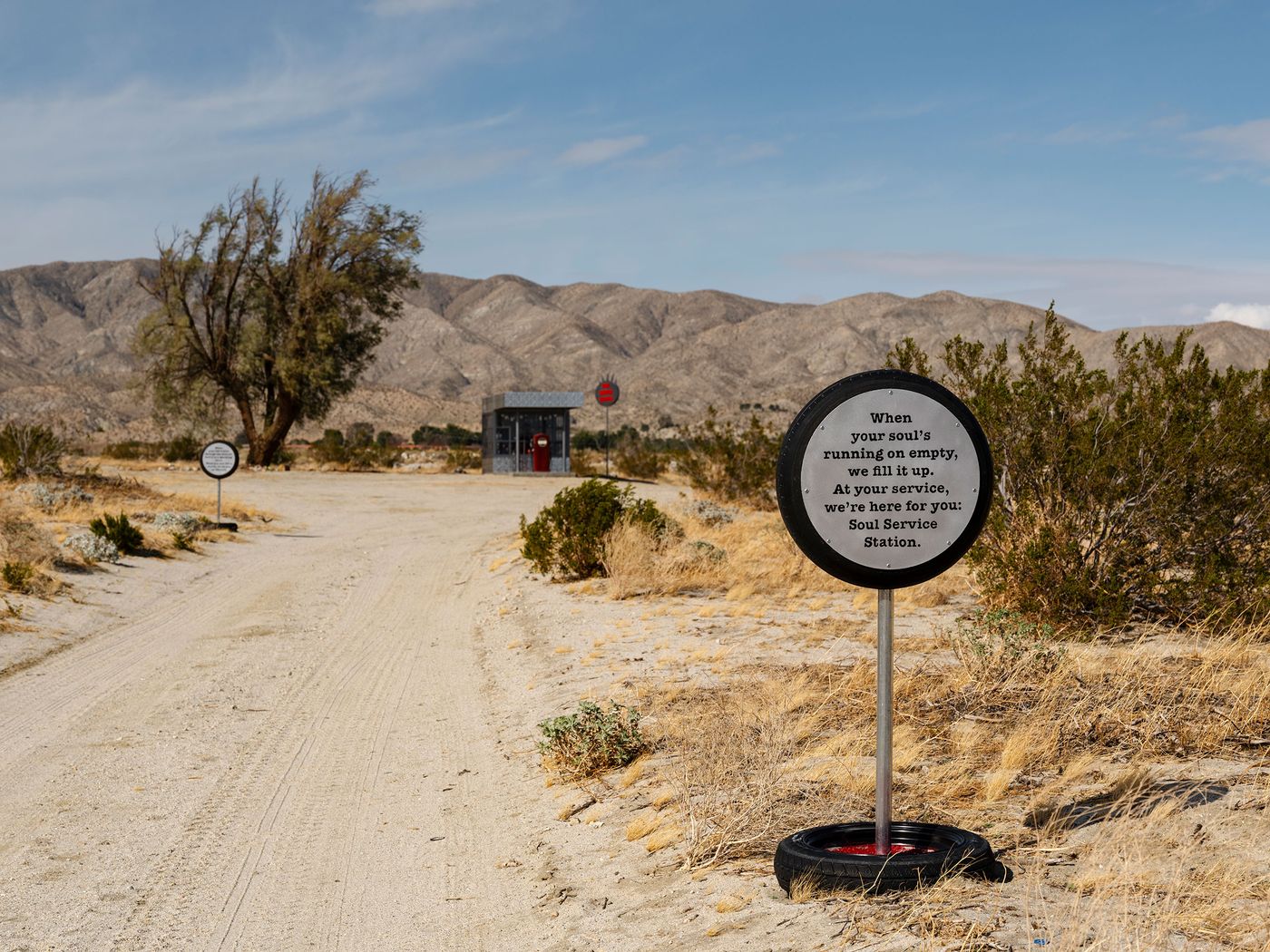
Desert X 2025 installation view of Alison Saar, Soul Service Station, photo by Lance Gerber, courtesy Desert X.
Californian artist Alison Saar also delves into the past with Soul Service Station, reimagining a sculptural intervention she created in Roswell, New Mexico in 1986. Constructed from salvaged materials, the installation takes its cues from the thousands of roadside gas stations that have populated the American West, including the Coachella Valley. Featuring community-crafted elements such as repoussé foil medallions inscribed with wishes for healing and hope, Saar’s station offers a spiritual top-up for weary travellers, inviting them to have “their blues flushed, spirits inflated, hearts charged, and souls filled.”
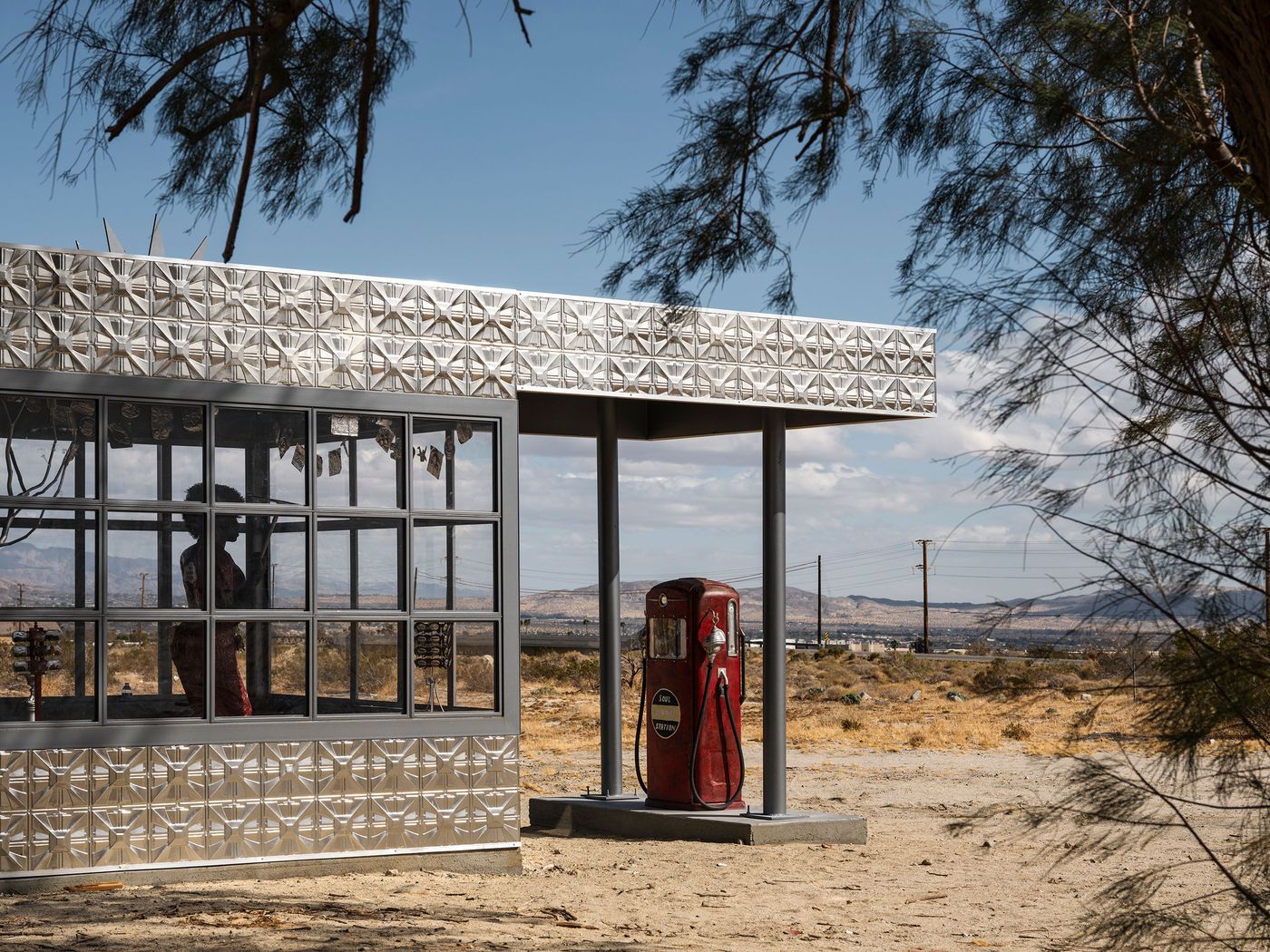
Desert X 2025 installation view of Alison Saar, Soul Service Station, photo by Lance Gerber, courtesy Desert X.

Desert X 2025 installation view of Cannupa Hanska Luger, G.H.O.S.T. Ride (Generative Habitation Operating System Technology), photo by Lance Gerber, courtesy Desert X.

Desert X 2025 installation view of Cannupa Hanska Luger, G.H.O.S.T. Ride (Generative Habitation Operating System Technology), photo by Lance Gerber, courtesy Desert X.
It’s not hard to imagine American artist Cannupa Hanska Luger’s nomadic caravan, G.H.O.S.T. Ride, pulling into Saar’s service station at some point during its journey across Coachella Valley over the duration of the exhibition. Combining salvaged industrial materials, ceramics, video, and sound, Luger’s mobile installation marries Mad Max aesthetics with Indigenous futurism. The result? A speculative, moving outpost that imagines communities living in harmony with nature in juxtaposition to colonial paradigms of extraction and exploitation.

Desert X 2025 installation view of Cannupa Hanska Luger, G.H.O.S.T. Ride (Generative Habitation Operating System Technology), photo by Lance Gerber, courtesy Desert X.
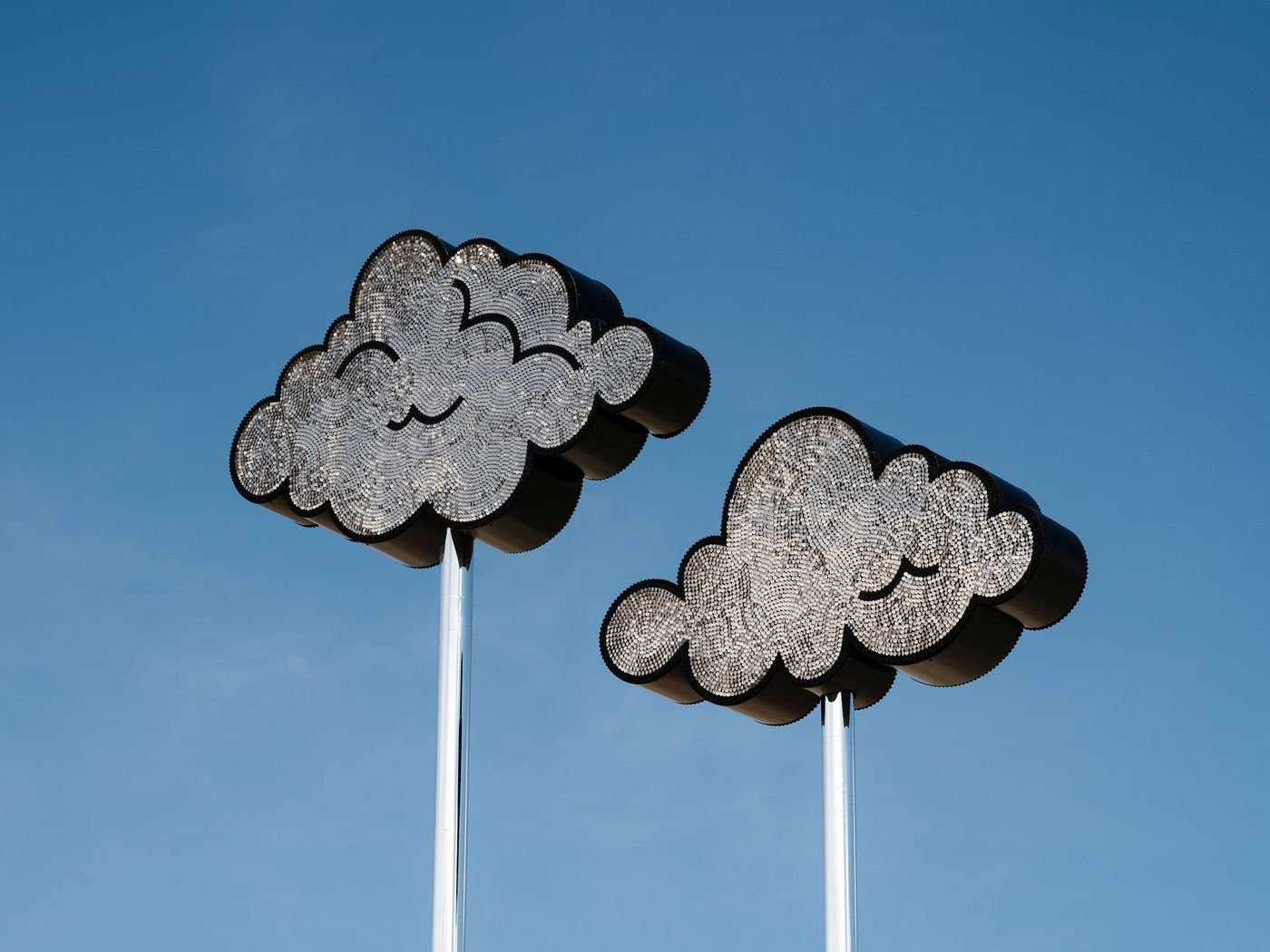
Desert X 2025 installation view of Sanford Biggers, Unsui (Mirror), photo by Lance Gerber, courtesy Desert X.
Finally, Unsui (Mirror) by New York-based artist Sanford Biggers features two cloud-shaped sculptures draped in sequins, shimmering like mirages in the desert light. Drawing on Buddhist philosophy, the term unsui—“clouds and water” in Japanese—symbolises freedom, boundlessness, and interconnection. In this parched environment, however, clouds also promise water: elusive, vital, and laden with hope.

Desert X 2025 installation view of Sanford Biggers, Unsui (Mirror), photo by Lance Gerber, courtesy Desert X.
Running until May 11, 2025, Desert X 2025 is less an exhibition than a pilgrimage through layered histories, speculative futures, and elemental truths. “As much as the desert is a state of place, it is also a state of mind,” Wakefield, the event’s artistic director reminds us. For here, imagination takes root in dust and light, sprouting visions of resilience, reconciliation, and radical possibility.

Desert X 2025 installation view of Sanford Biggers, Unsui (Mirror), photo by Lance Gerber, courtesy Desert X.
